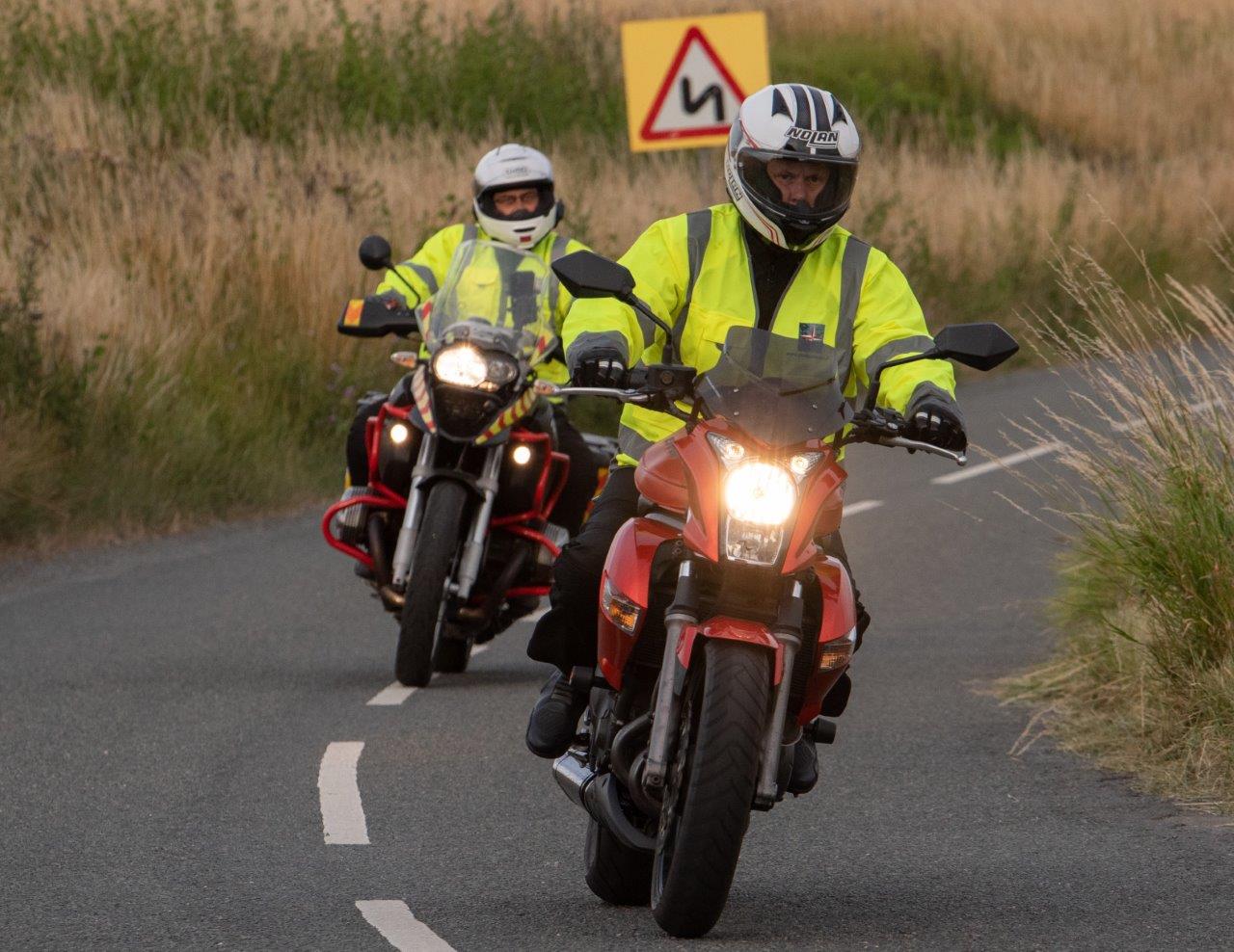Riding a motorcycle
There's something truly exhilarating about the freedom of cruising down the open road on two wheels. The wind in my face, the roar of the engine beneath me—it's a feeling like no other.
Exploring new places on my motorcycle has fed my sense of adventure for many years. Whether it's a scenic ride through the countryside or navigating through bustling city streets, every journey is an opportunity for excitement, discovery and learning.
Of course, safety is always a top priority when riding. I make sure to wear all the necessary gear, including a helmet, gloves, boots and high-visibility protective clothing, I'm constantly vigilant of my surroundings to avoid any potential hazards on the road.
But beyond the adrenaline rush and the thrill of the ride, there's also a sense of camaraderie among fellow riders. Whether it's exchanging nods of acknowledgment at red lights or striking up conversations at rest stops, there's a unique bond that comes with being part of the motorcycle community.
Overall, riding a motorcycle has brought me immense joy and satisfaction. It's not just a mode of transportation—it's a lifestyle. I highly recommend giving it a try if you haven't already.
Take care and ride safe
Motorcycle safety checks
Performing regular safety checks on your motorcycle is essential for ensuring your ride remains safe and reliable. Here's a comprehensive list of motorcycle safety checks you should perform before hitting the road:
-
Tires: Check tire pressure and tread depth. Ensure tires are properly inflated according to manufacturer recommendations. Look for any signs of wear, cracks, or bulges.
-
Brakes: Test both the front and rear brakes to ensure they engage smoothly and effectively. Check brake fluid levels and look for any leaks.
-
Lights: Inspect headlights, taillights, brake lights, and turn signals. Make sure all lights are working properly, including high and low beams.
-
Fluids: Check levels of engine oil, coolant, and brake fluid. Top up fluids as needed and look for any signs of leaks.
-
Controls: Test all controls, including the throttle, clutch, and brakes. Ensure they move smoothly and respond correctly.
-
Chain or Belt: Examine the chain or belt for proper tension and alignment. Lubricate the chain if necessary and look for any signs of wear or damage.
-
Suspension: Inspect the front forks and rear shock absorbers for leaks, damage, or excessive wear. Test the suspension by bouncing the bike to ensure it rebounds smoothly.
-
Electrical System: Check the battery for corrosion and ensure it is securely mounted. Test the horn, indicators, and other electrical components.
-
Mirrors: Adjust mirrors to ensure optimal visibility. Make sure they are clean and free from any cracks or damage.
-
Frame and Bodywork: Inspect the frame and bodywork for any signs of damage, cracks, or rust. Ensure all panels are securely attached.
-
Kickstand and Center Stand: Check that the kickstand and center stand are functioning correctly and securely in place.
-
Exhaust System: Look for any signs of damage, rust, or leaks in the exhaust system. Check for loose or missing bolts.
-
Fasteners and Bolts: Inspect all nuts, bolts, and fasteners to ensure they are tight and secure. Pay special attention to critical components like handlebars and suspension mounts.
-
Fuel System: Check for any leaks in the fuel lines and inspect the fuel tank for damage or corrosion. Ensure the fuel cap seals properly.
-
Emergency Tools: Carry essential emergency tools such as a tire repair kit, tire pressure gauge, and basic toolkit for roadside repairs.
Regularly performing these safety checks will help keep your motorcycle in top condition and ensure a safe and enjoyable riding experience. Remember to consult your motorcycle's owner's manual for specific maintenance schedules and procedures.
Riding on wet roads
Riding a motorcycle on wet roads can be a daunting experience, but with the right precautions, it can still be enjoyable and safe. Here are some essential tips to keep in mind:
- Slow Down: Reduce your speed to allow for increased braking distance and decreased traction.
- Maintain Traction: Be gentle with the throttle, brakes, and steering to avoid skidding or loss of control.
- Stay Visible: Use your headlights and reflective gear to ensure other drivers can see you clearly in the rain.
- Avoid Puddles: Standing water can hide potholes or other hazards, so try to steer clear of large puddles.
- Give Space: Leave extra space between you and other vehicles to account for longer stopping distances.
- Stay Smooth: Make gradual movements and avoid sudden acceleration, braking, or swerving.
By following these tips and staying alert, you can confidently navigate wet roads and enjoy your motorcycle ride safely. Remember, it's always better to arrive a bit late than to not arrive at all.
Arrive alive
Two Second Rule Safe Following Distance
The two-second rule is a crucial safety guideline for maintaining a safe following distance when riding a motorcycle. It helps ensure that riders have enough time to react to sudden changes in traffic conditions, such as abrupt stops or unexpected obstacles.
To apply the two-second rule, choose a fixed point on the road ahead, like a sign or a tree. When the vehicle in front of you passes this point, start counting "one thousand and one, one thousand and two." If you reach the same point before finishing the count, you're following too closely and should increase your following distance.
This rule is effective because it accounts for the time it takes for a rider to recognise a hazard and react accordingly. Keeping at least a two-second gap provides a buffer zone, reducing the likelihood of rear-end collisions and giving riders more time to stop or maneuver safely. In adverse weather conditions, such as rain or fog, or when riding at night, it's wise to increase the following distance to four seconds as these conditions can reduce visibility and traction, making it harder to stop quickly.
By adhering to the two-second rule and adjusting as needed, motorcycle riders can enhance their safety and reduce the risk of accidents.
Page 1 of 2






